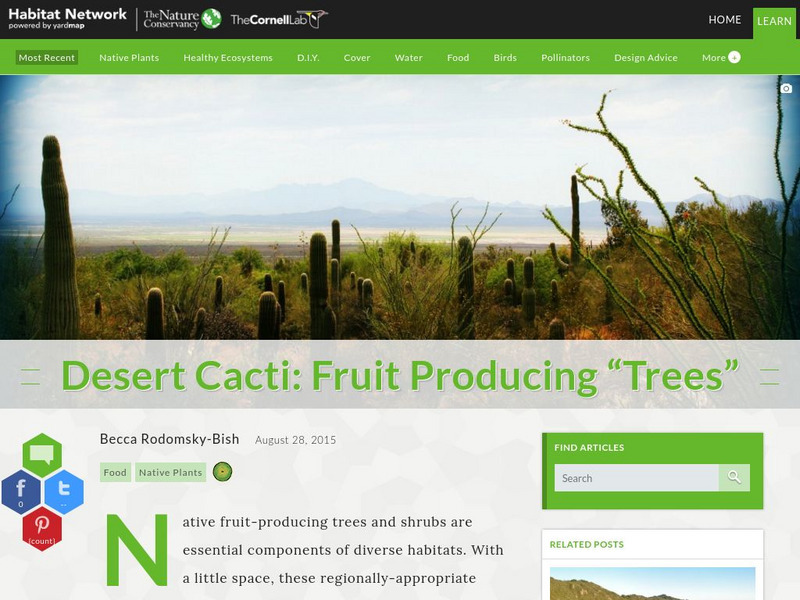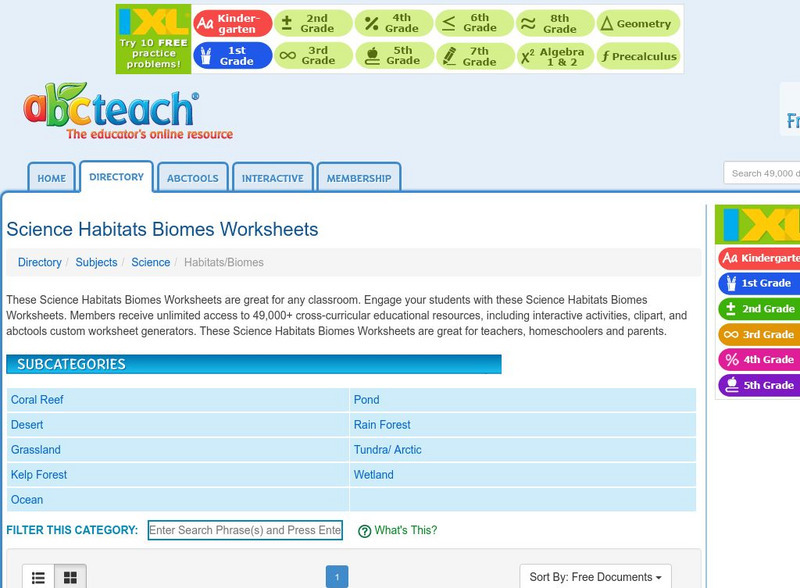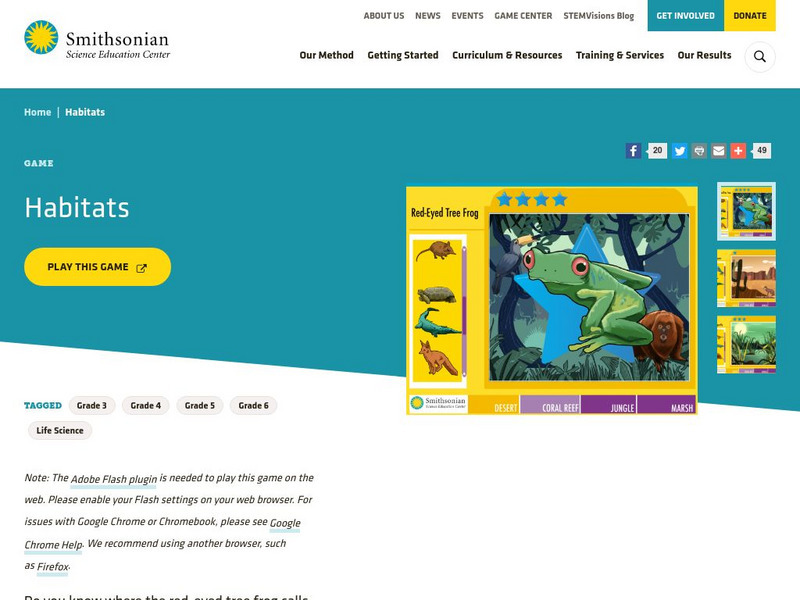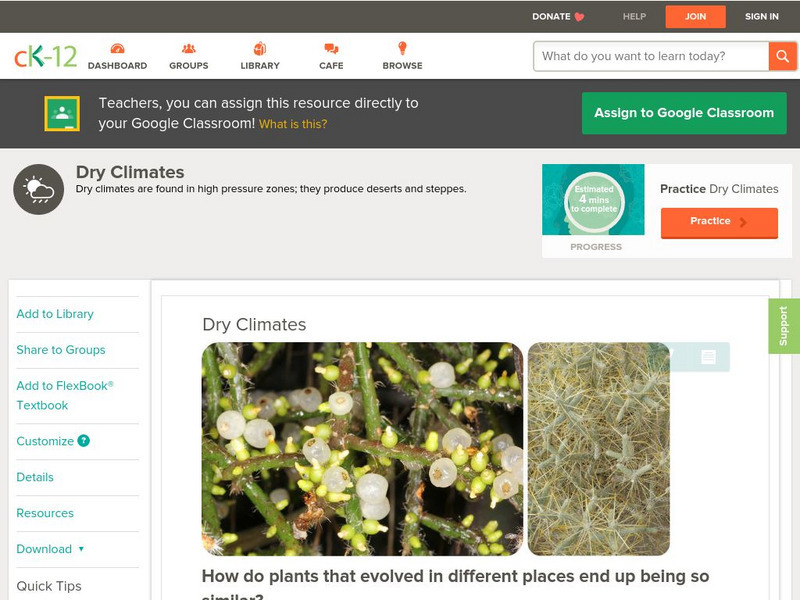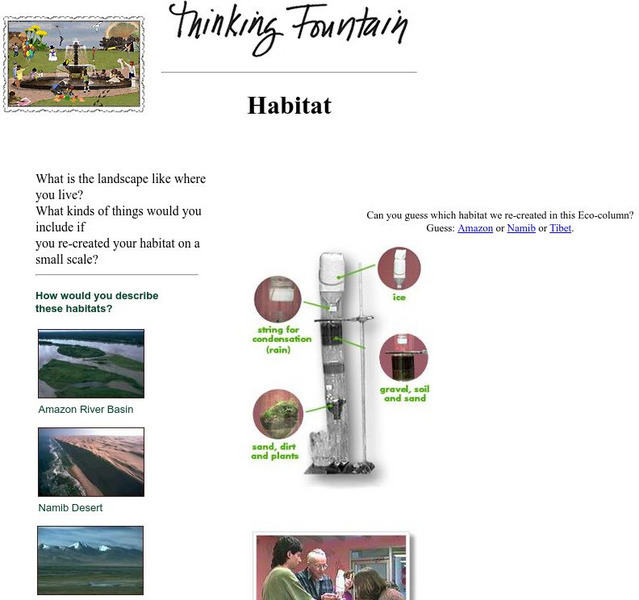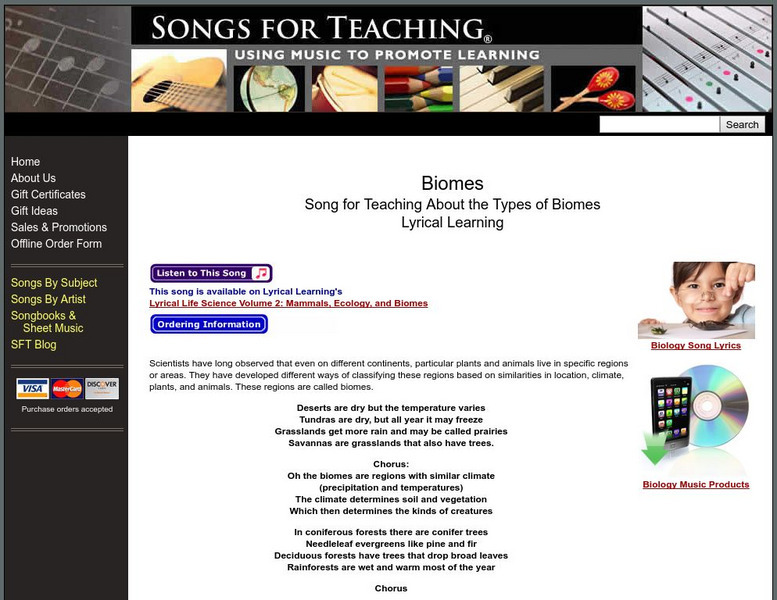Hi, what do you want to do?
Curated OER
Animal Life Histories Derived From Morphology
Students learn the mechanisms of natural selection by deducing information from the physical appearance of the animal.
Curated OER
The Planet Wakyabi
Fifth graders explain how organisms' specialized structures and variations work with the environment to help them survive.
Curated OER
Hide & Seek Butterflies
Students examine a variety of butterflies and discuss how they believe they get their color variations. In groups, they brainstorm the advantages and disadvantages of their color schemes. To end the lesson plan, they watch butterflies...
Curated OER
For Creative Minds: Mountain Ecosystems
In this mountain ecosystems worksheet, learners read information about mountain ecosystems and study various diagrams about the environment. Students match animals in the ecosystem to their descriptions.
Curated OER
Make a Rain Stick
Students create a rain stick to imitate the nature sounds in a rainforest habitat. In this rainforest habitat lesson, students create a rain stick to mimic the cultural tools used in the South American rainforest. Students use paper...
Curated OER
Caterpillar Camouflage
Learners list animals, plant parts, and reasons for caterpillars to camouflage themselves. In this animal and plant adaptations lesson plan, students also play a game where they use colors as camouflage.
Curated OER
Alphabetical Autobiography PowerPoint
Sixth graders produce an autobiography, They complete a PowerPoint including one graphic image on each slide, and a subtle or moderate animation. They include 26 slides for each letter of the alphabet, use note pages to present...
Curated OER
Critters & Complementary Colors
Students discover how specific colors compliment each other. Students use paints and pictures of animals to create a picture with analogous color harmony. They explain the characteristics of analogous colors.
Science Struck
Science Struck: Arabian Desert Facts
Presents interesting information about the Arabian Desert, including its physical geography, climate, plants and animals, their adaptations to the environment, natural resources, and threats to its habitats.
Cornell Lab of Ornithology
Habitat Network: Desert Cacti: Fruit Producing "Trees"
Find out why native fruit-producing trees and shrubs are essential components of diverse habitats.
abcteach
Abcteach: Habitats and Biomes
[Free Registration/Login Required] Find a variety of activities for children to do as they learn to identify varying habitats and biomes. Included are links to an even more extensive list of resources under coral reef, desert, grassland,...
Smithsonian Institution
Smithsonian Science Education Center: Habitats
Explore different habitats and match them to the animals that belong there. After choosing a correct animal, click on the caption to get information about it.
CK-12 Foundation
Ck 12: Earth Science: Dry Climates
[Free Registration/Login may be required to access all resource tools.] Describes dry climates such as the desert and steppe.
Discovery Education
Discovery Education: Habitats of the World
This site has a instructional activity to use to start a unit on biomes and animal habitats. This plan incorporates grasslands, temperate forests, tropical rainforests, deserts, polar ice regions, and tidepools.
Ducksters
Ducksters: Science for Kids: World Biomes and Ecosystems
Kids learn about the world's biomes and ecosystems. The network of life and biodiversity needed for all to survive.
Science Museum of Minnesota
Science Museum of Minnesota: Thinking Fountain: Habitat
Explore the basics of a few habitats and then create an ecocolumn--a simulated cross-section of a biome such as a rain forest--with your own environment.
PBS
Pbs Kids: Plum Landing: Can You Dig It?
Set in the Australian desert, players become bilbies to search at night for food while looking out for hungry predators like dingos, foxes, and swooping eagles.
Scholastic
Scholastic: Study Jams! Science: Ecosystems: Biomes
A video and a short multiple-choice quiz on the topic of biomes, and the six different types that are found on Earth.
Utah Education Network
Uen: Utah's Plants and Animals Do You Know Where I Live?
Can you figure out what types of biomes different organisms belong in? You'll be presented with a variety of organisms and asked which of three biomes they belong in.
Songs for Teaching
Songs for Teaching: Biomes
Use this site to see how many of the animals and plants that your students can remember from each biome after listening to this song.
Songs for Teaching
Songs for Teaching: Types of Biomes
Doug Eldon performs this great song which tells about the different biomes and their characteristics. Great way to begin your unit on the biomes.














